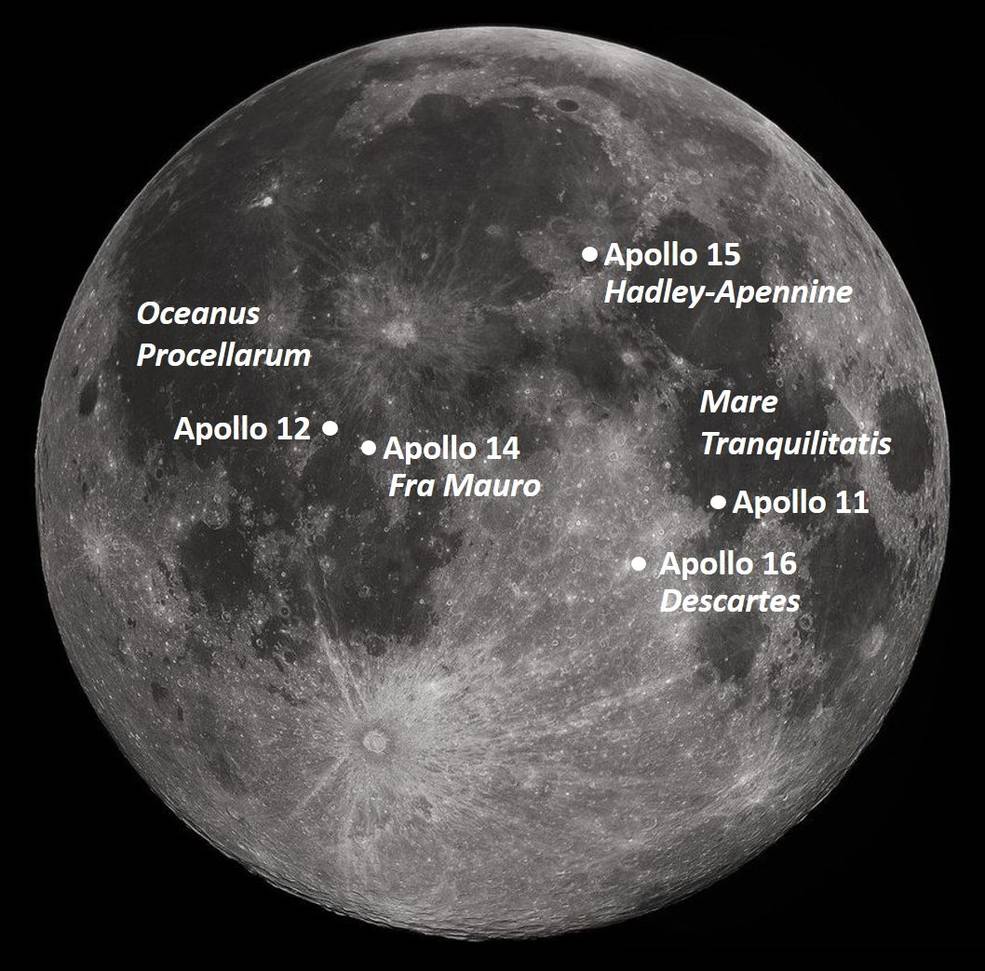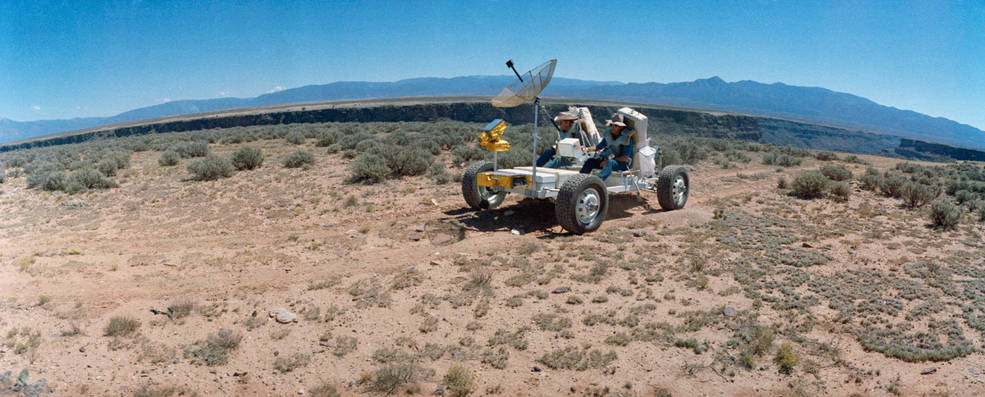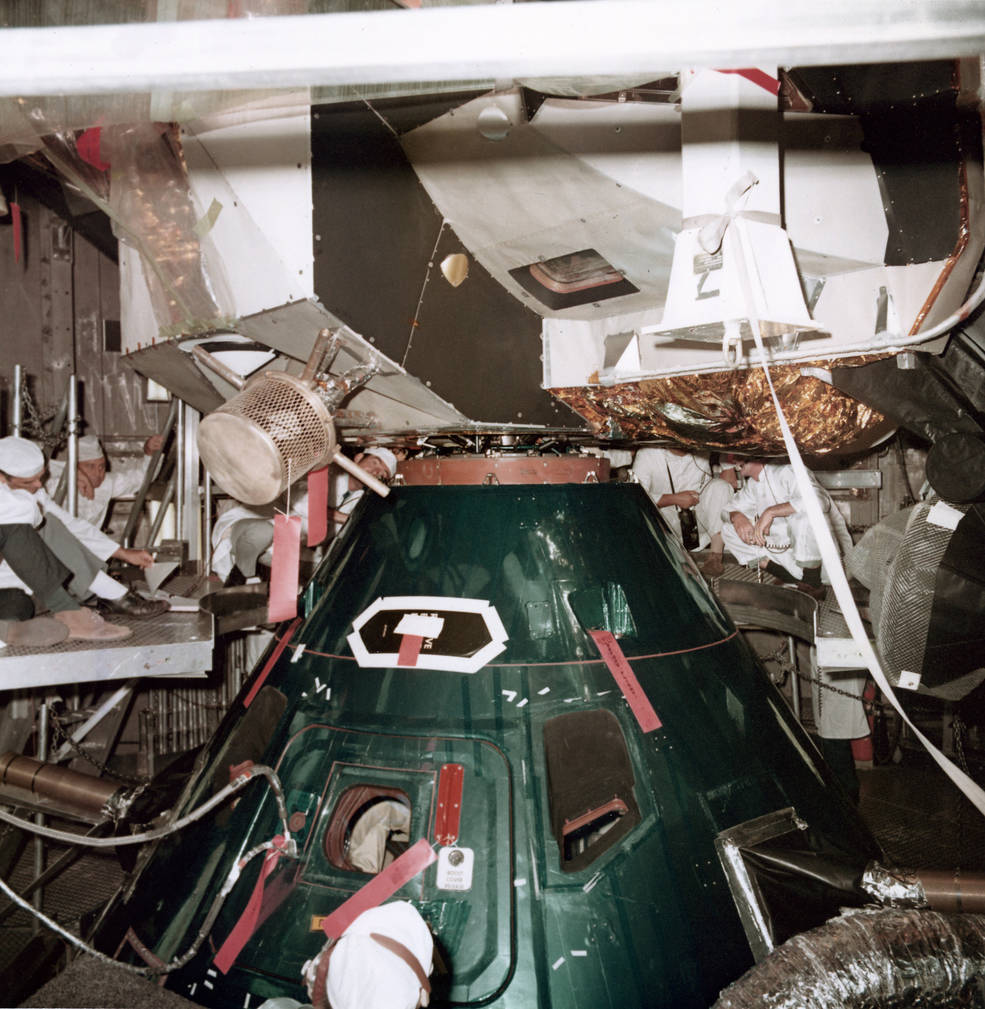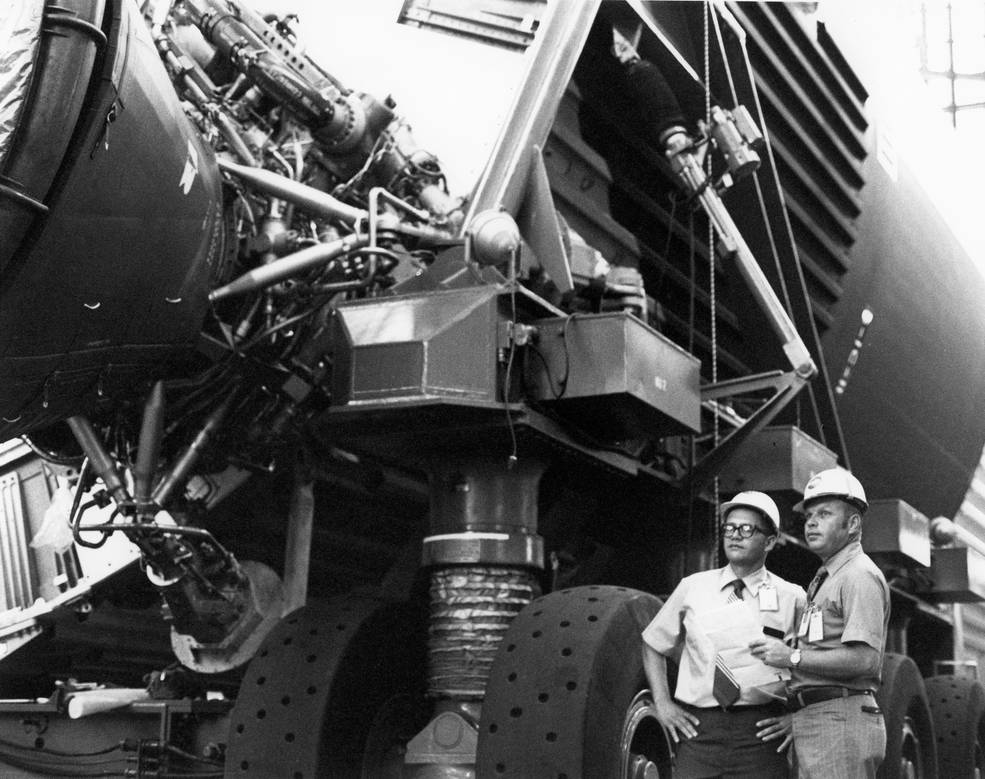On June 17, 1971, NASA announced the selection of the Descartes highlands region as the landing site for Apollo 16 – the second to last Moon landing mission, then scheduled for March 1972. The area lies in the central lunar highlands and because of its presumed volcanic origin, geologists expected to learn new information about the Moon’s history from the returned samples. The Apollo 16 crew was composed of Commander John W. Young, Command Module Pilot Thomas K. Mattingly, and Lunar Module Pilot Charles M. Duke and their backups Fred W. Haise, Stuart A. Roosa, and Edgar D. Mitchell. They received geology instruction during monthly field trips to areas of geologic interest, while ground crews continued to prepare the Apollo spacecraft and its Saturn V rocket for the mission.


Left: The location of the Apollo 16 landing site in the central lunar highlands, with the
earlier Apollo sites shown for reference. Right: A closeup image of the Apollo 16
Descartes landing site.
The Descartes site, so-called because of the nearby crater named after 17th century French philosopher and mathematician René Descartes, was the southernmost of all the Apollo landing areas. Located in the Moon’s central highlands at about nine degrees east longitude and 16 degrees south latitude, the area appealed to geologists as it represented the first location in the lunar highlands to be sampled. At the time, most geologists believed the highlands to be of volcanic origin, featuring lava domes similar to those seen in volcanic regions on Earth. Geologists expected the material returned from this area to be older than the mare samples returned by Apollo 11 and 12 from the Sea of Tranquility and the Ocean of Storms, respectively, but younger than the Apollo 14 samples from the Fra Mauro site. As an added bonus, two fresh craters near the Apollo 16 site were expected to yield samples ejected from deeper layers of the Moon by the impacts.


Left: Geology principal investigator William R. Muelhberger, left, of the University of Texas talks with Apollo 16 astronaut John W. Young, while behind them geologist David R. Wones talks with astronaut Charles M. Duke during the geology field trip to Mono Craters, California. Right: Duke, left, and Young during the geology field trip to Sudbury, Ontario.
Beginning in September 1970, six months prior to their formal assignment to the mission, the Apollo 16 astronauts began monthly field trips to gain firsthand experience with a variety of geologic formations. Based on the assumption that the Descartes region had volcanic origins, geology training exercises focused on terrestrial sites believed to have similar pasts. In June 1971, the prime and backup commanders and lunar module pilots Young, Duke, Haise, and Mitchell traveled to the Mono Craters area – a volcanic chain consisting of craters, domes, and lava flows in eastern California – to assess the terrain. Assisted by geology principal investigator William R. Muehlberger of the University of Texas and a team of geologists, the astronauts explored the lava domes at the site, taking photographs and samples. In July, the astronauts explored the Sudbury Basin in Ontario, Canada, a meteorite impact area long misinterpreted as volcanic in origin., taking photographs and samples. In July, the astronauts explored the Sudbury Basin in Ontario, Canada, a meteorite impact area long misinterpreted as volcanic in origin.

Apollo 16 astronauts Charles M. Duke, left, and John W. Young driving the GROVER geologic rover built by the U.S. Geologic Survey during the geology field trip to the Rio Grande Gorge near Taos, New Mexico.


Left: Apollo 16 astronauts John W. Young, left, and Charles M. Duke photographing the Rio Grande Gorge near Taos, New Mexico, during a geology field trip. Right: Apollo 16 backup astronauts Edgar D. Mitchell, left, and Fred W. Haise collect samples during the Rio Grande Gorge geology filed trip.
During the Sep. 8-10, 1971 geology field trip to the Rio Grande Gorge near Taos, New Mexico, the astronauts for the first time used the GROVER, the Geologic Rover built by the U.S. Geologic Survey as a ground-based version of the Lunar Roving Vehicle that the astronauts drove on the Moon. During this training session, the astronauts simulated an actual lunar surface traverse, using photography and sampling techniques similar to those conducted during an actual Moonwalk. Astronaut Anthony W. England acted as capsule communicator during the exercise as he would during the mission. Command Module Pilot Mattingly utilized aerial photography of the site to correlate overhead imagery with what Young and Duke observed on the ground. Apollo 16 Flight Director M.P. “Pete” Frank was on hand to observe the training session.


Left: Engineers at NASA’s Kennedy Space Center (KSC) in Florida conduct a docking test of Apollo 16 command module, bottom, and lunar module. Right: Inspections begin on the Apollo 16 Saturn V’s first stage shortly after its arrival in KSC’s Vehicle Assembly Building.
Meanwhile, at NASA’s Kennedy Space Center in Florida, ground crews continued to prepare the Apollo 16 spacecraft and its Saturn V launch vehicle for the mission. On Aug. 24, 1971, engineers conducted a docking test of the command and lunar modules in an altitude chamber in the Manned Spacecraft Operations Building. The test, the last time the two spacecraft were mated until the docking on the way to the Moon, ensured the integrity of all interfaces between the two vehicles. Saturn V’s first stage arrived September 17th at the Vehicle Assembly Building, the final addition to the second and third stages that were delivered earlier. Ground crews stacked the first stage onto its mobile launcher four days later, followed by the second and third stages in early October.
To be continued…


























